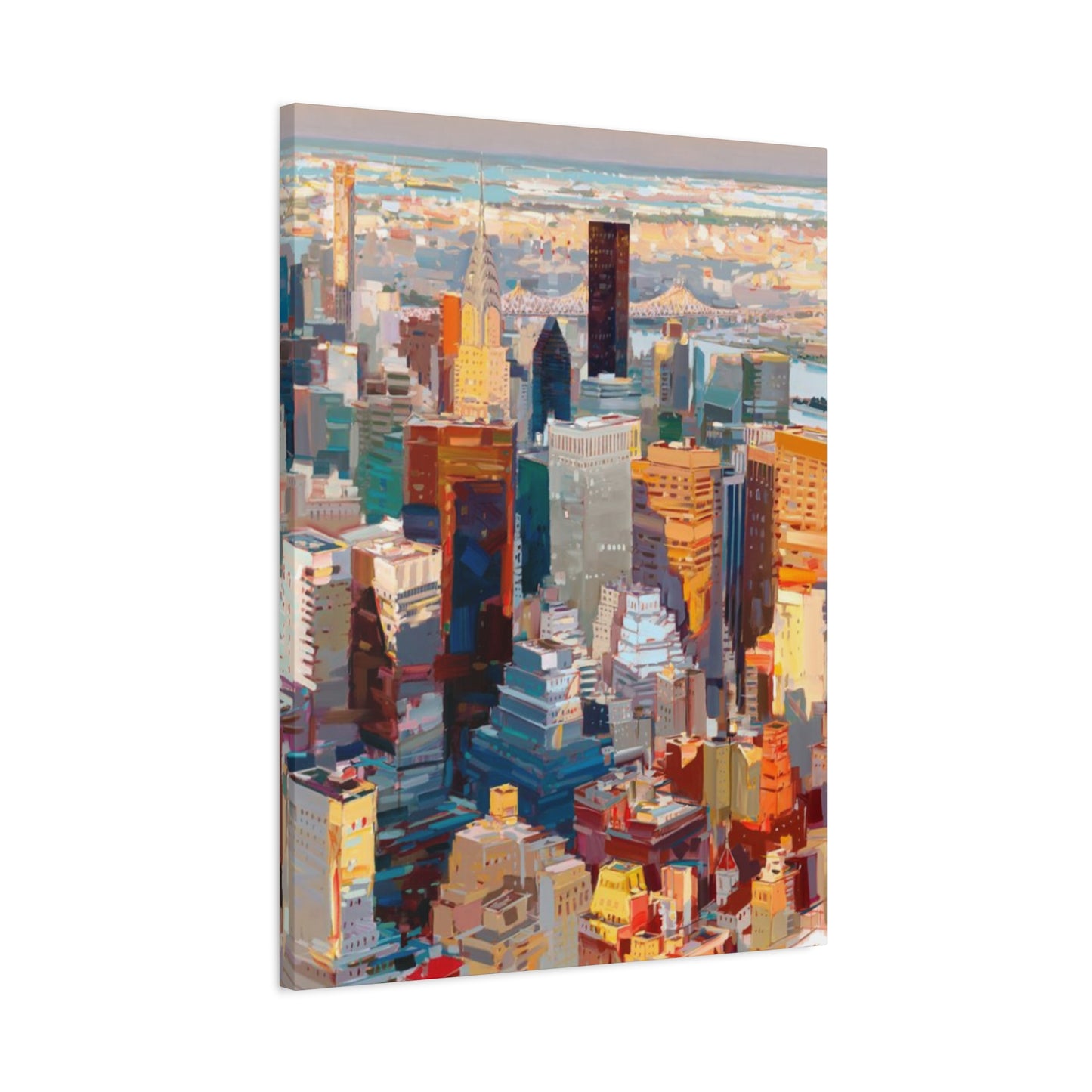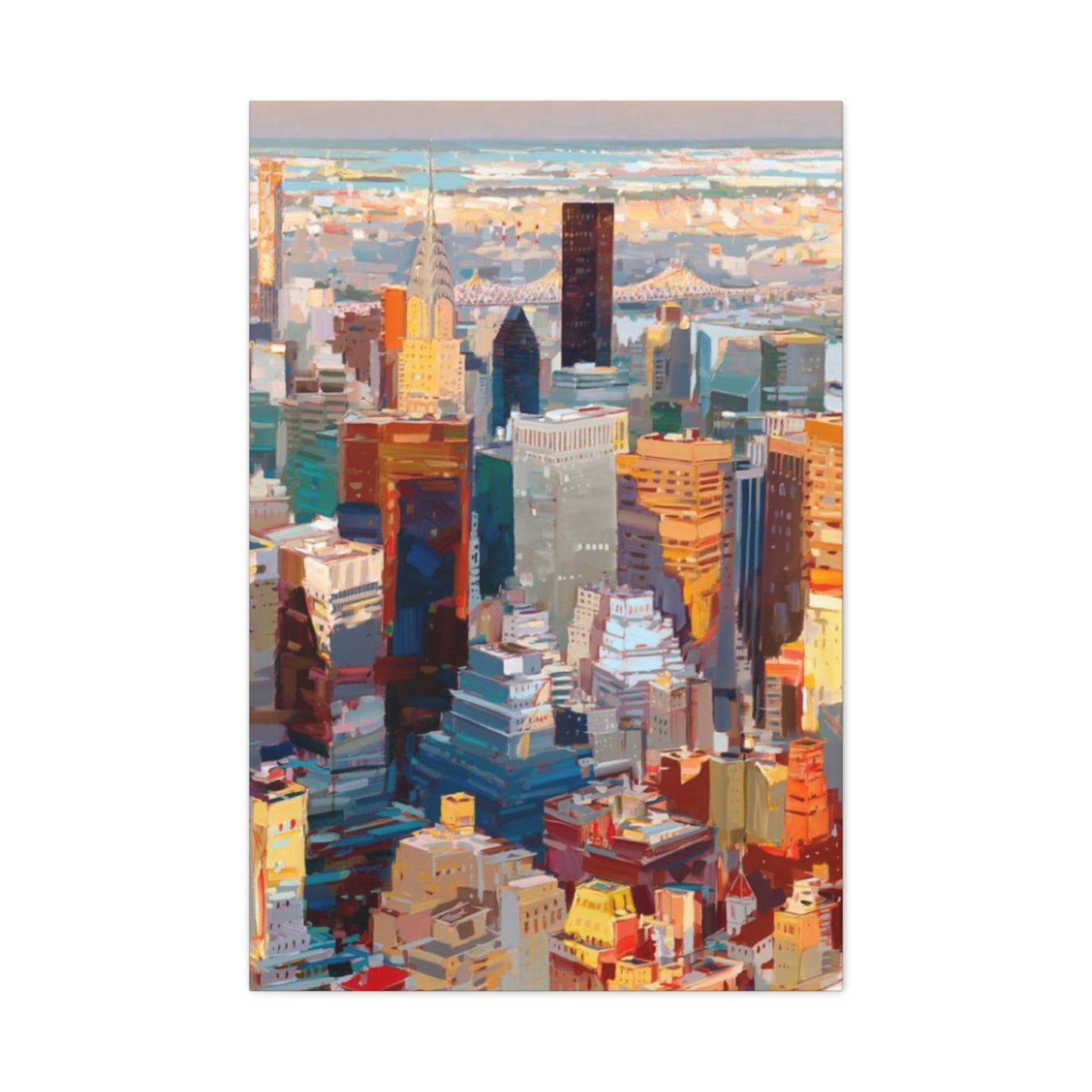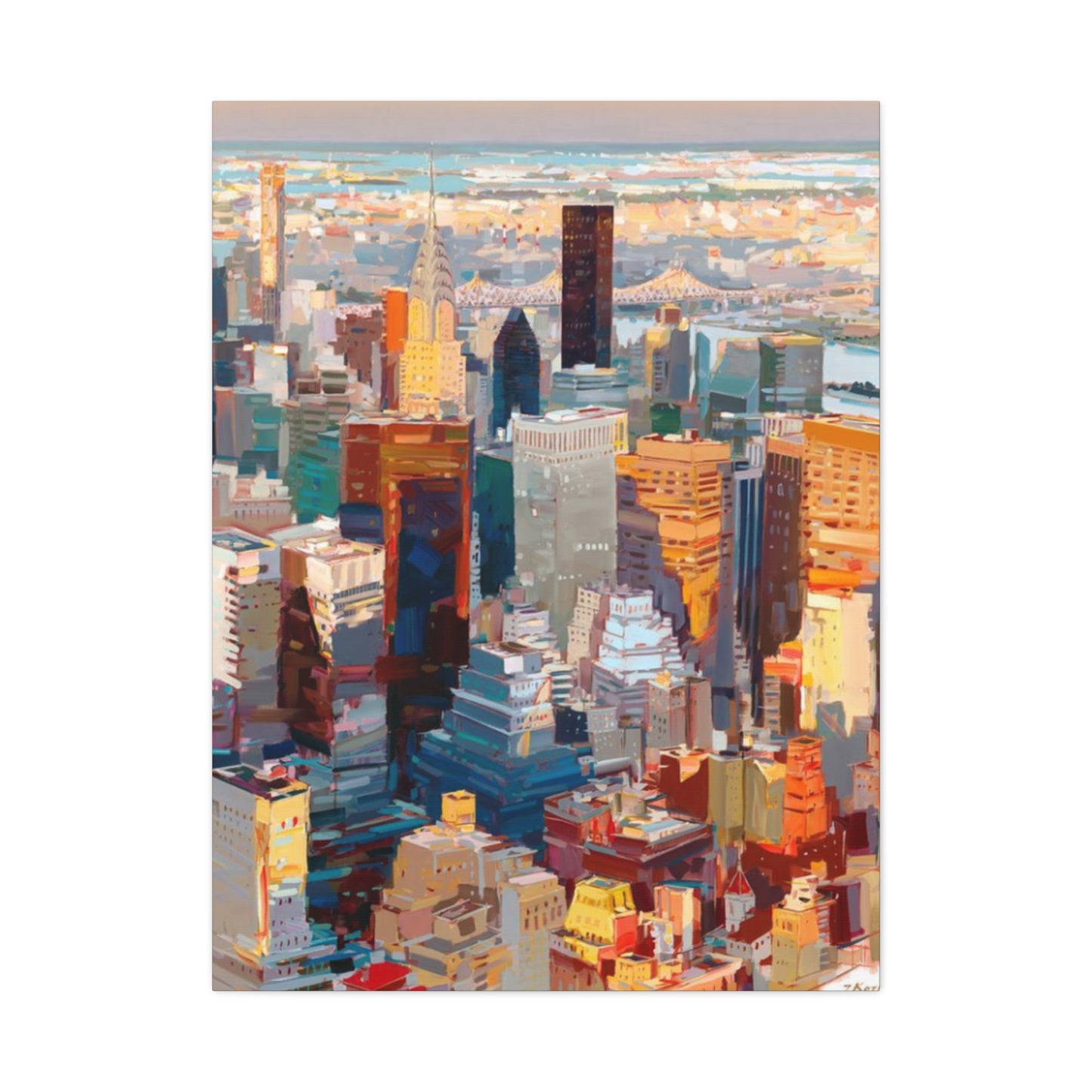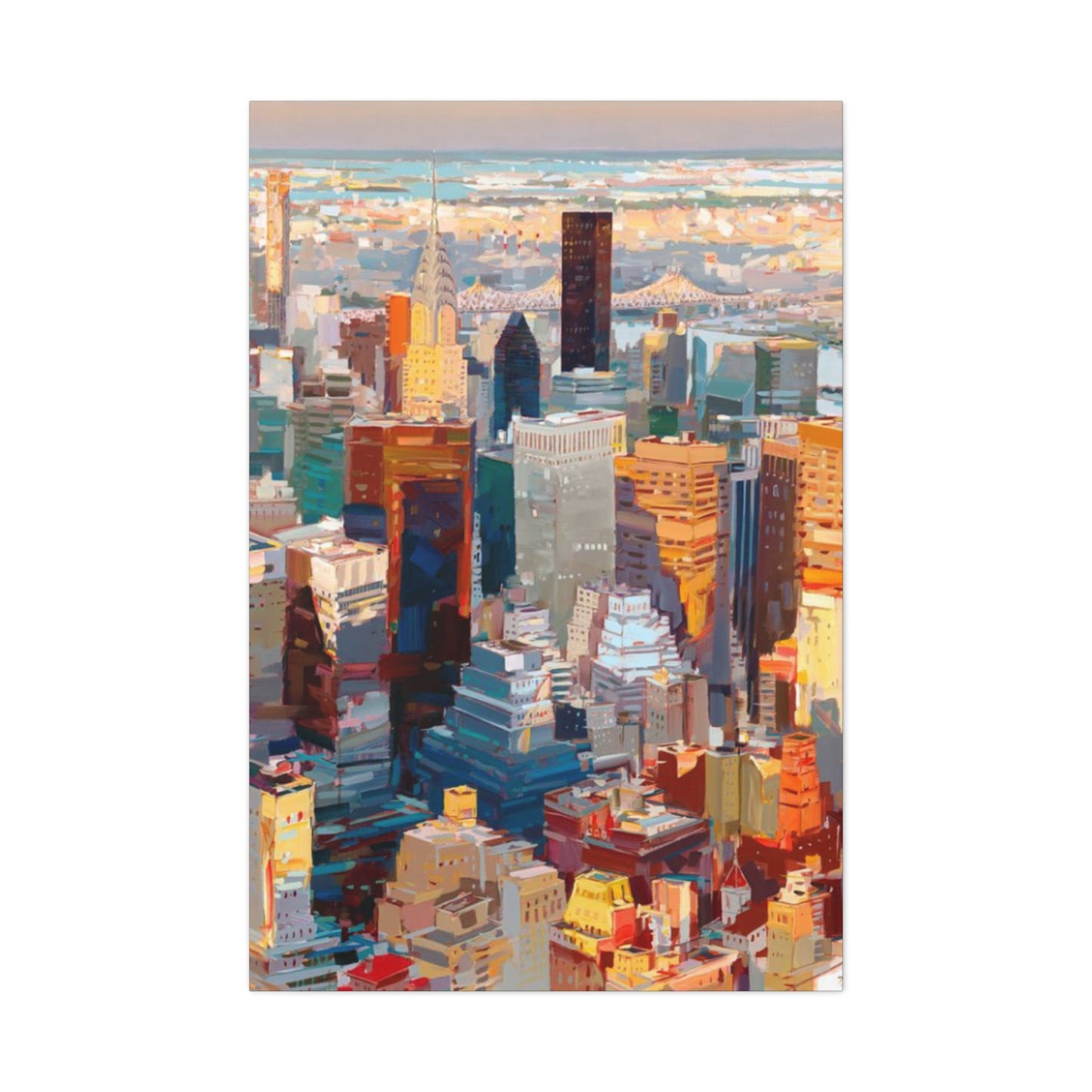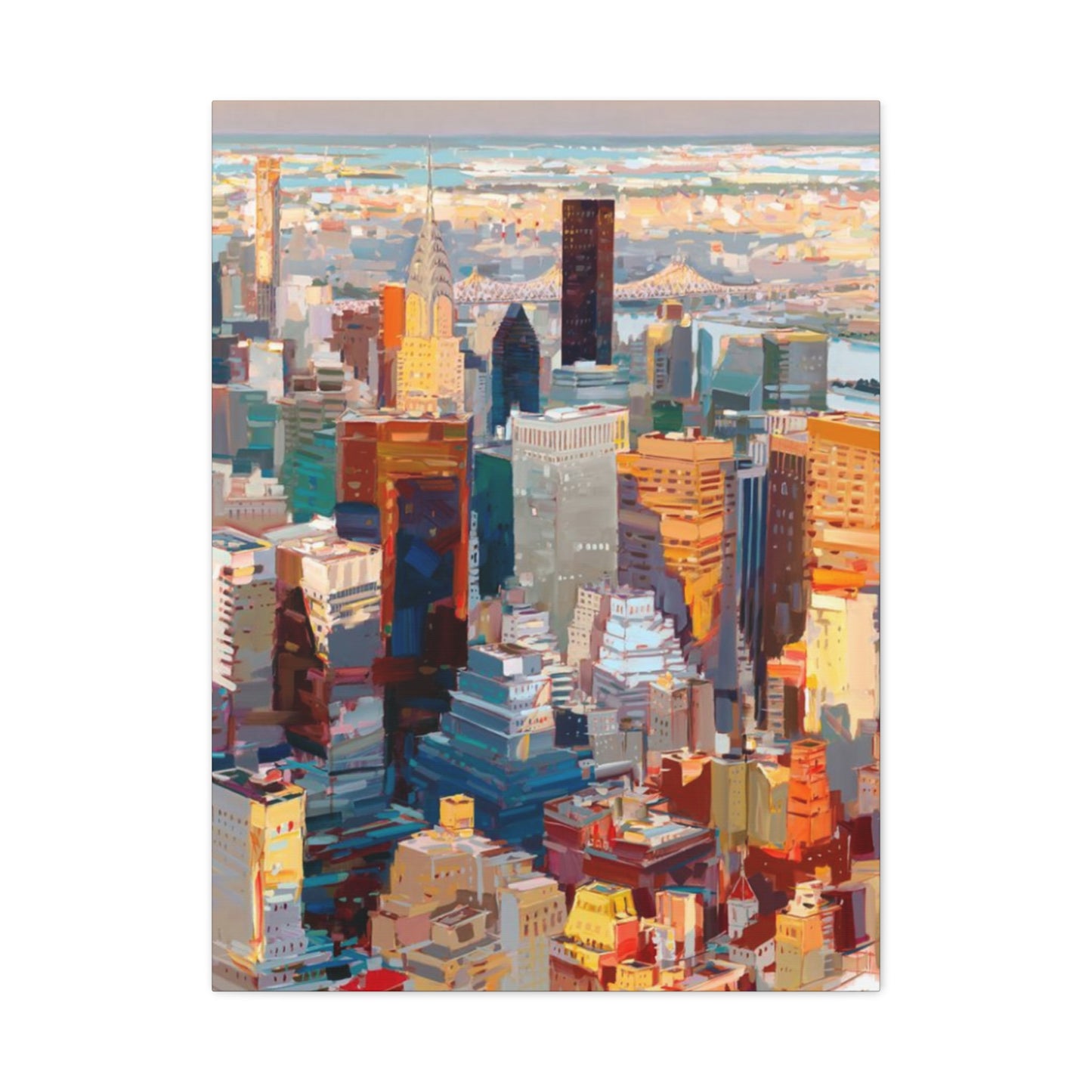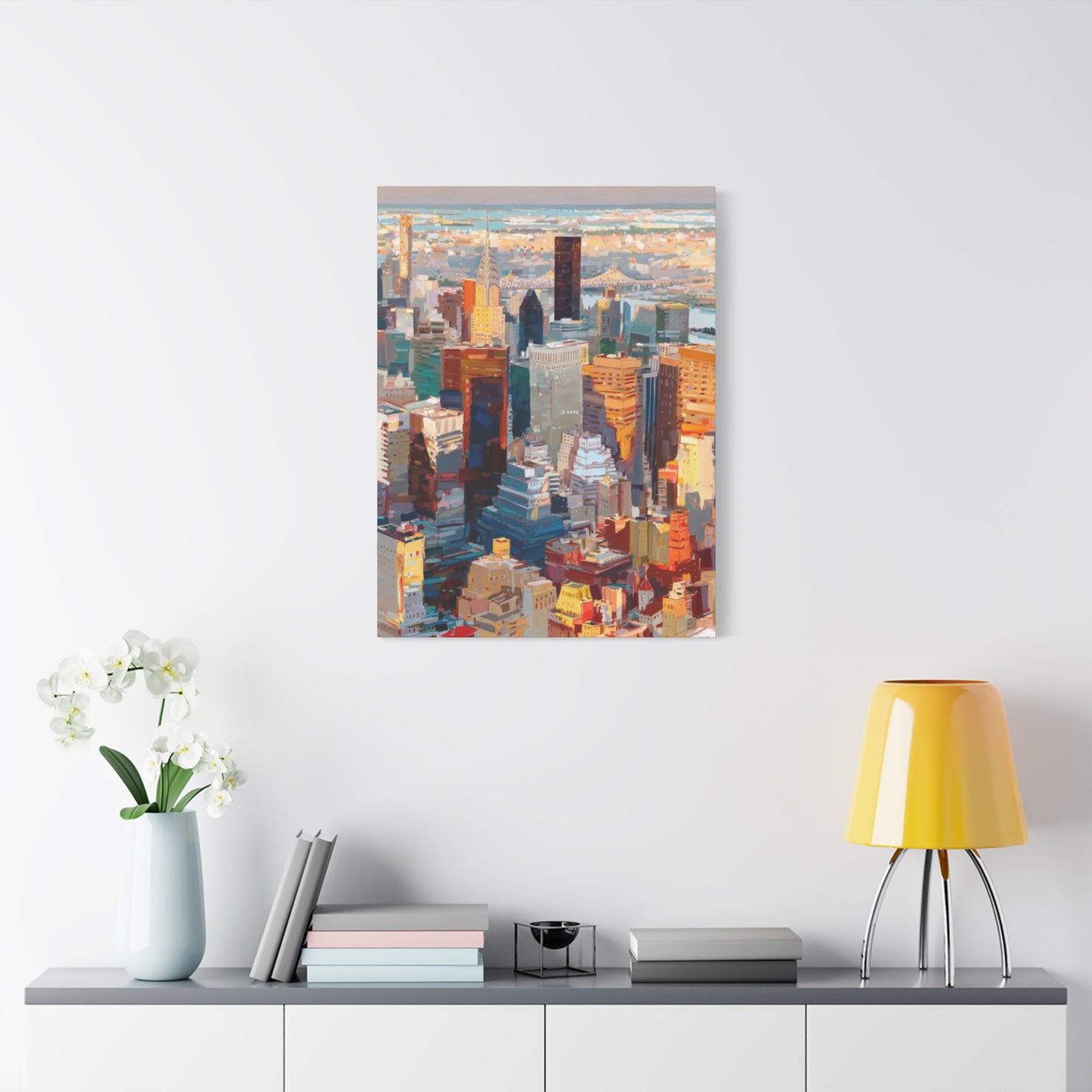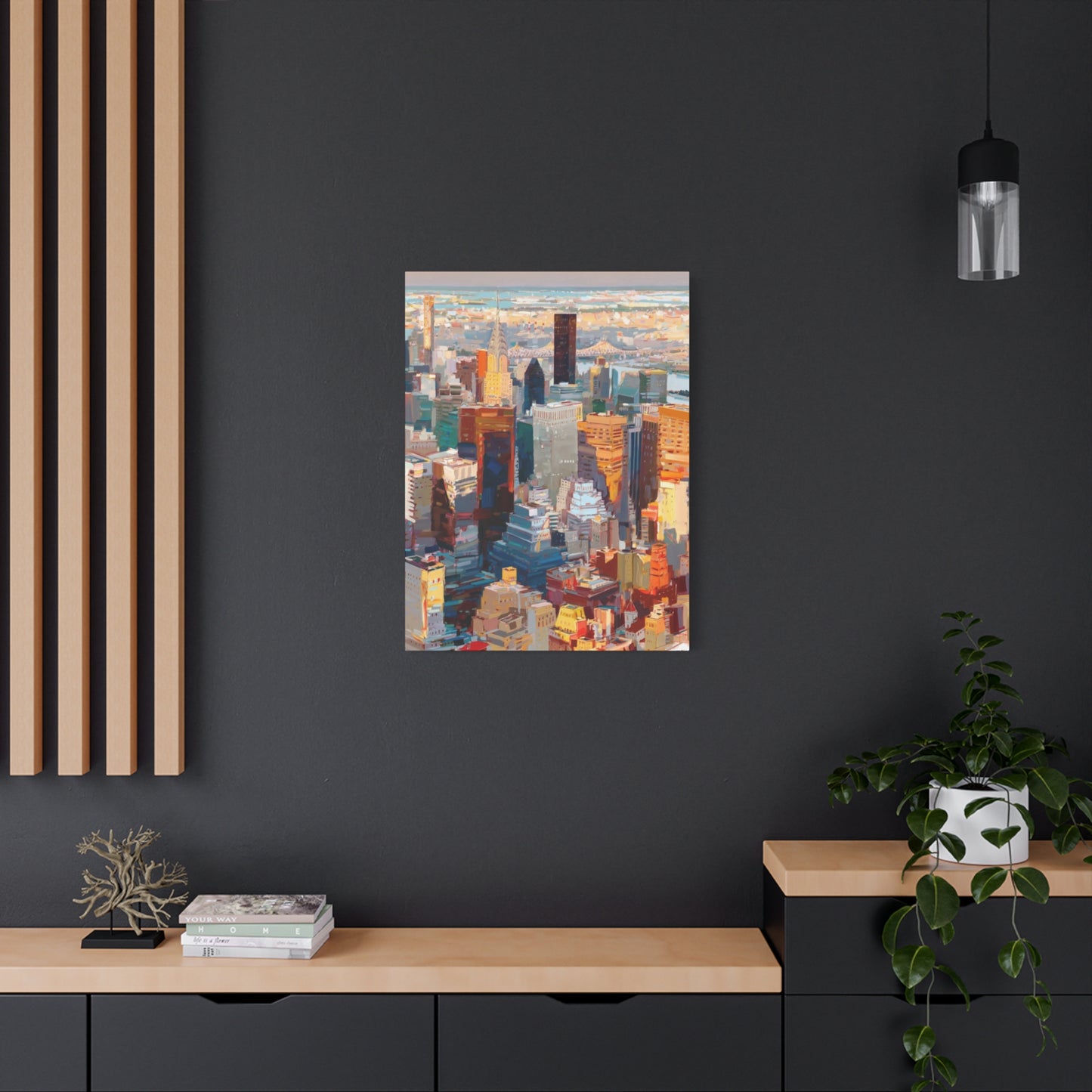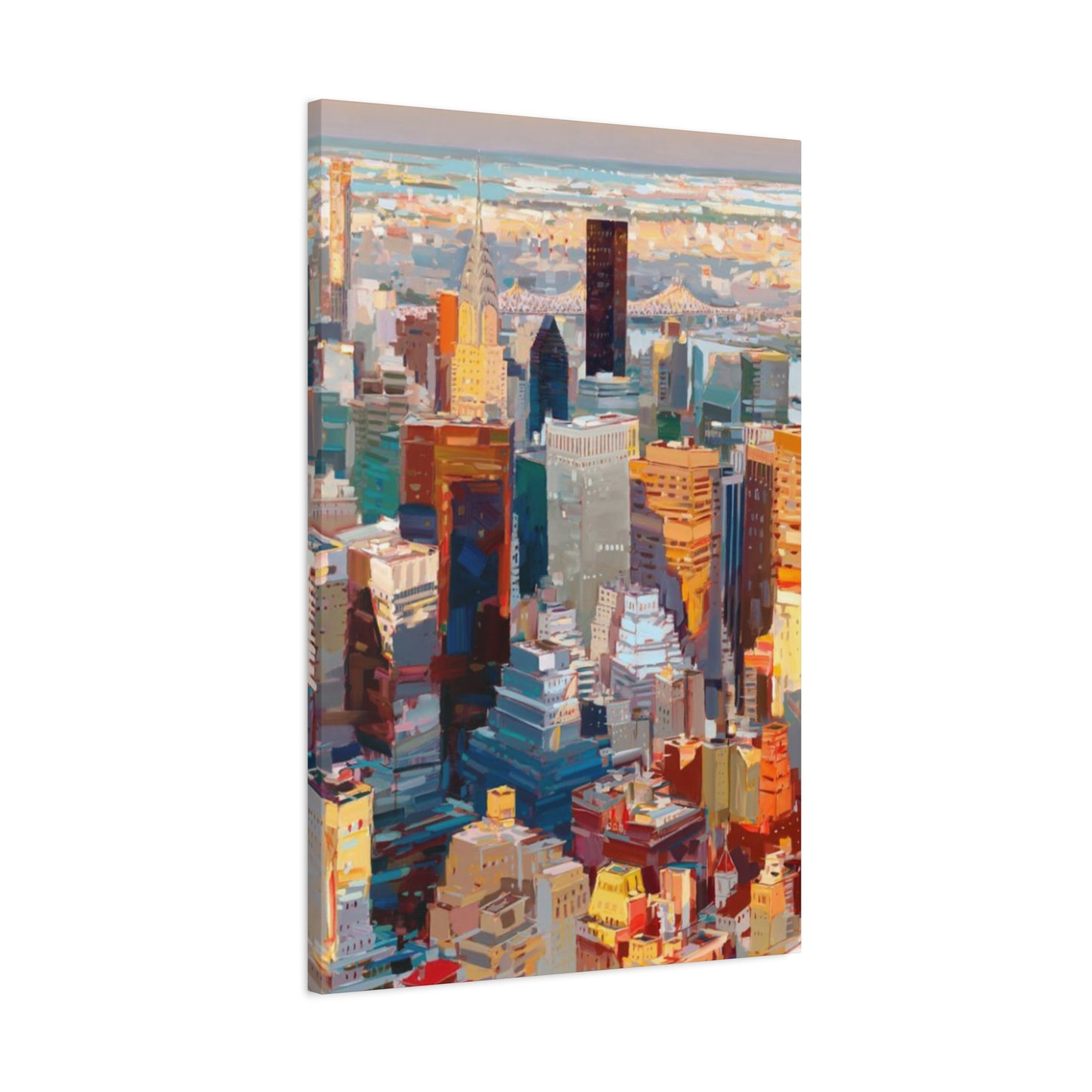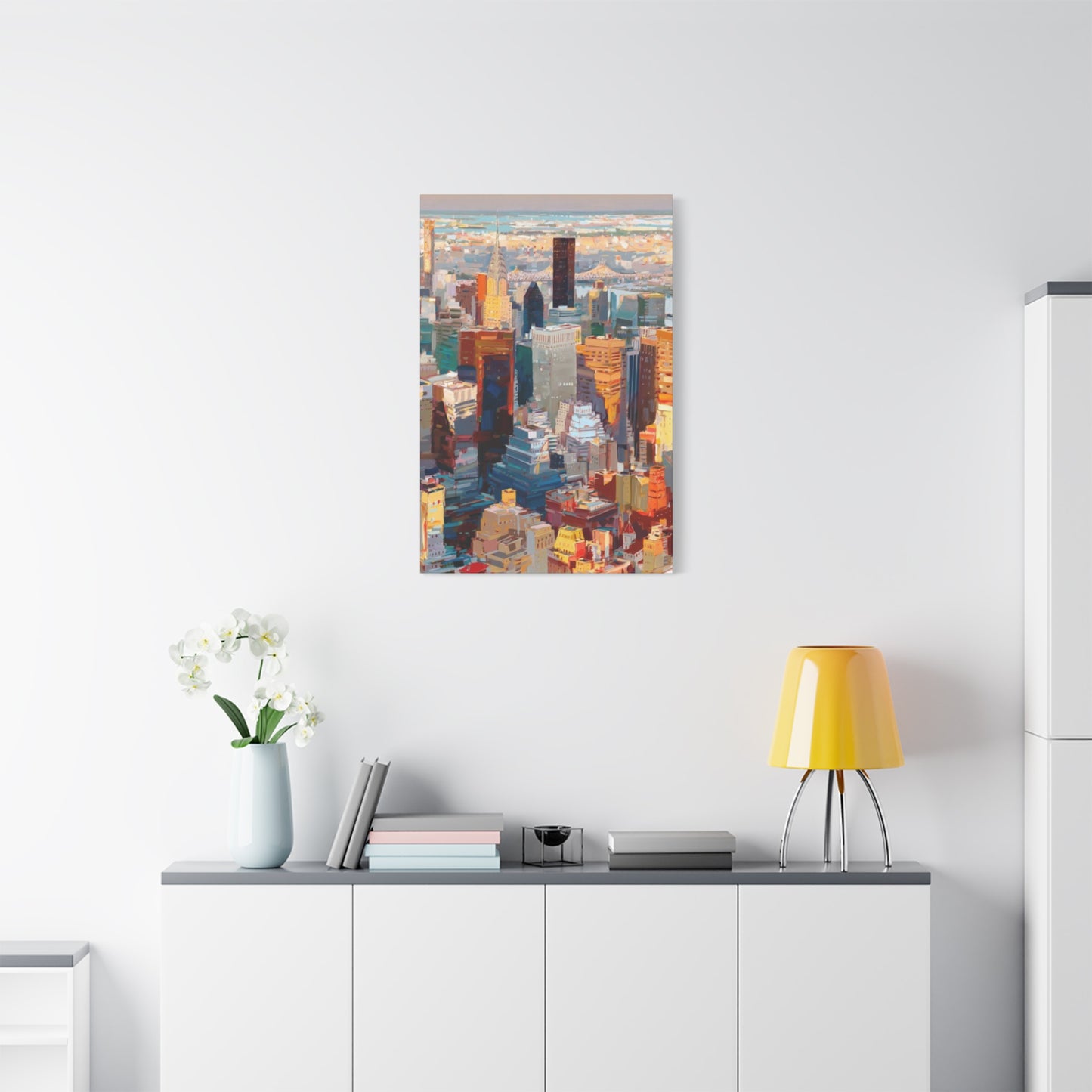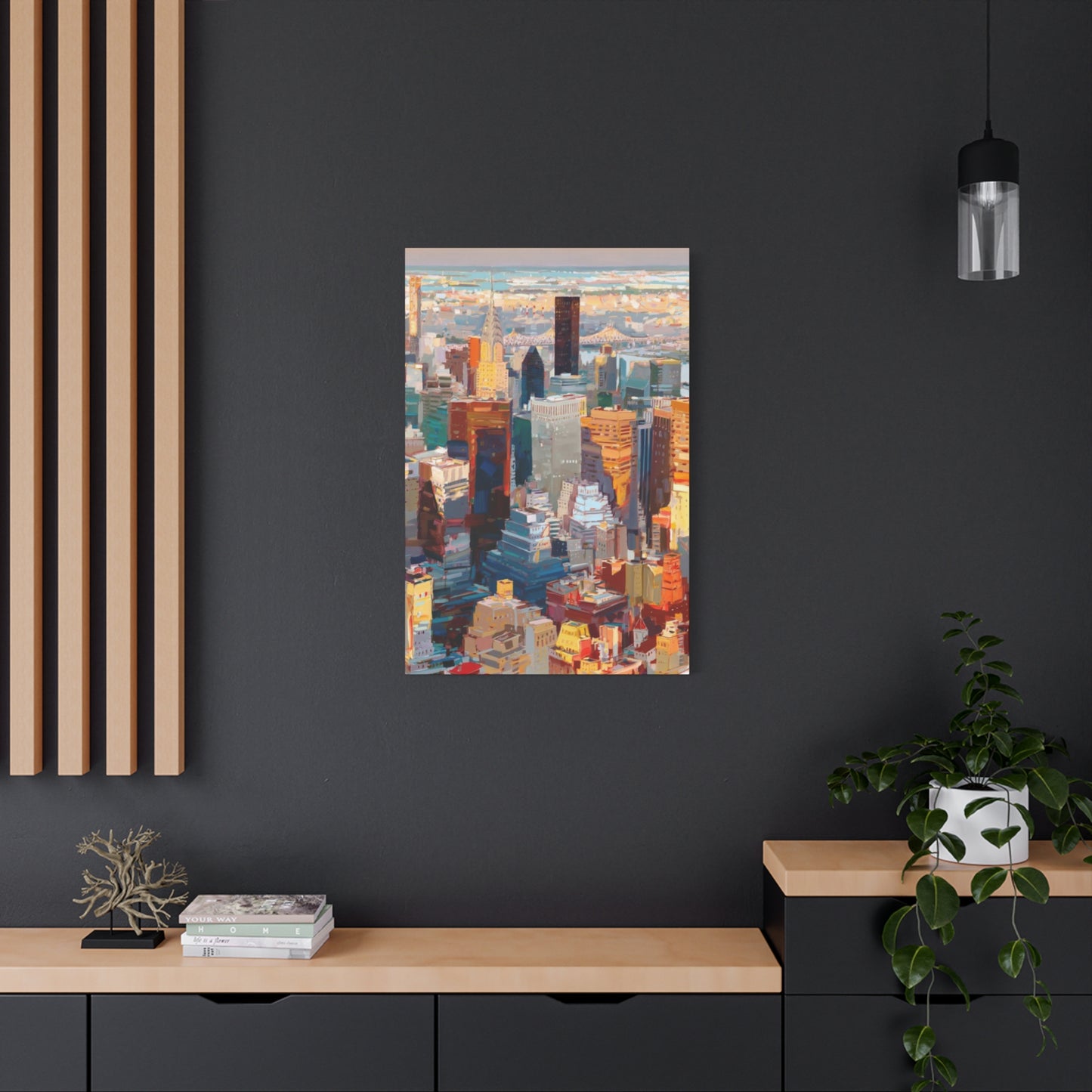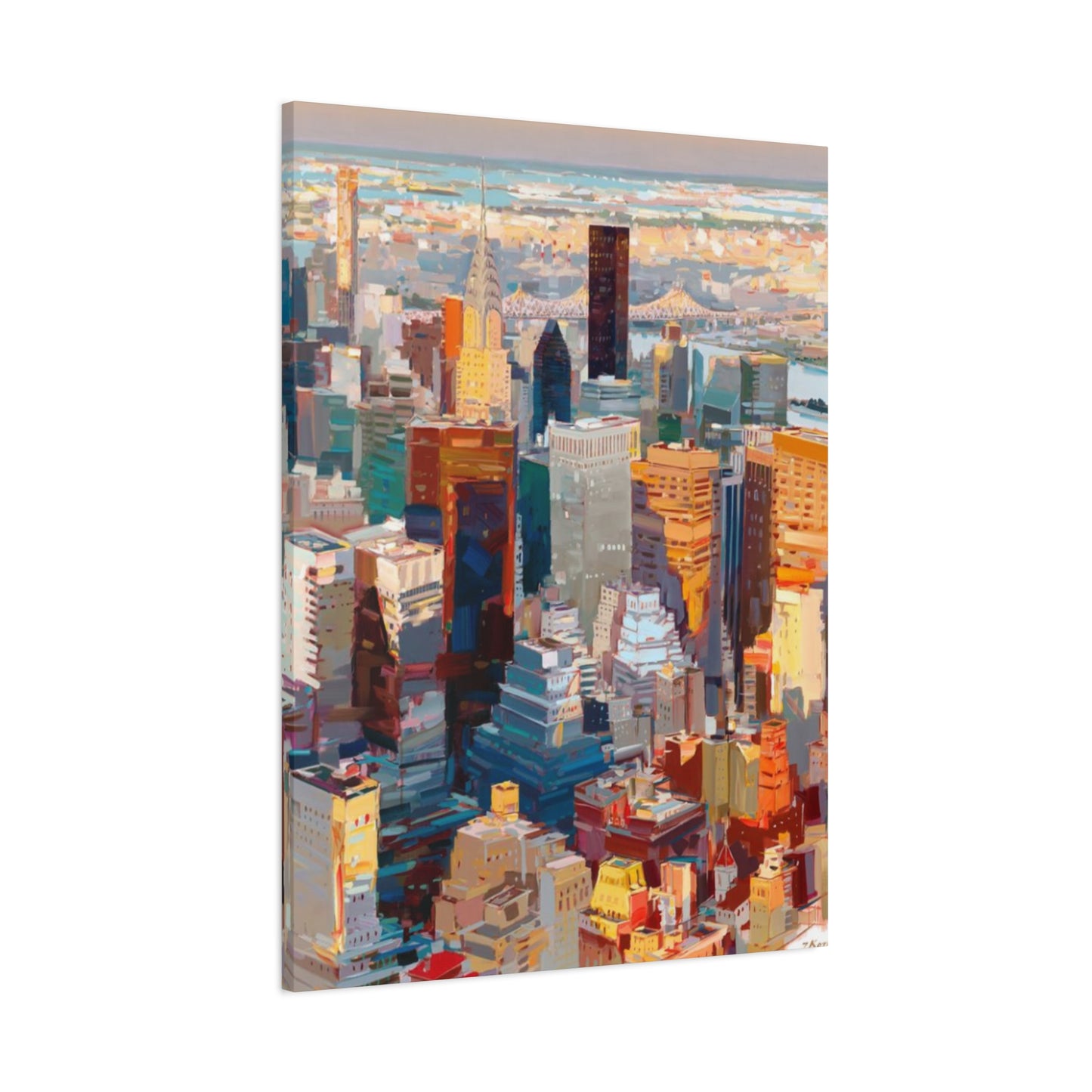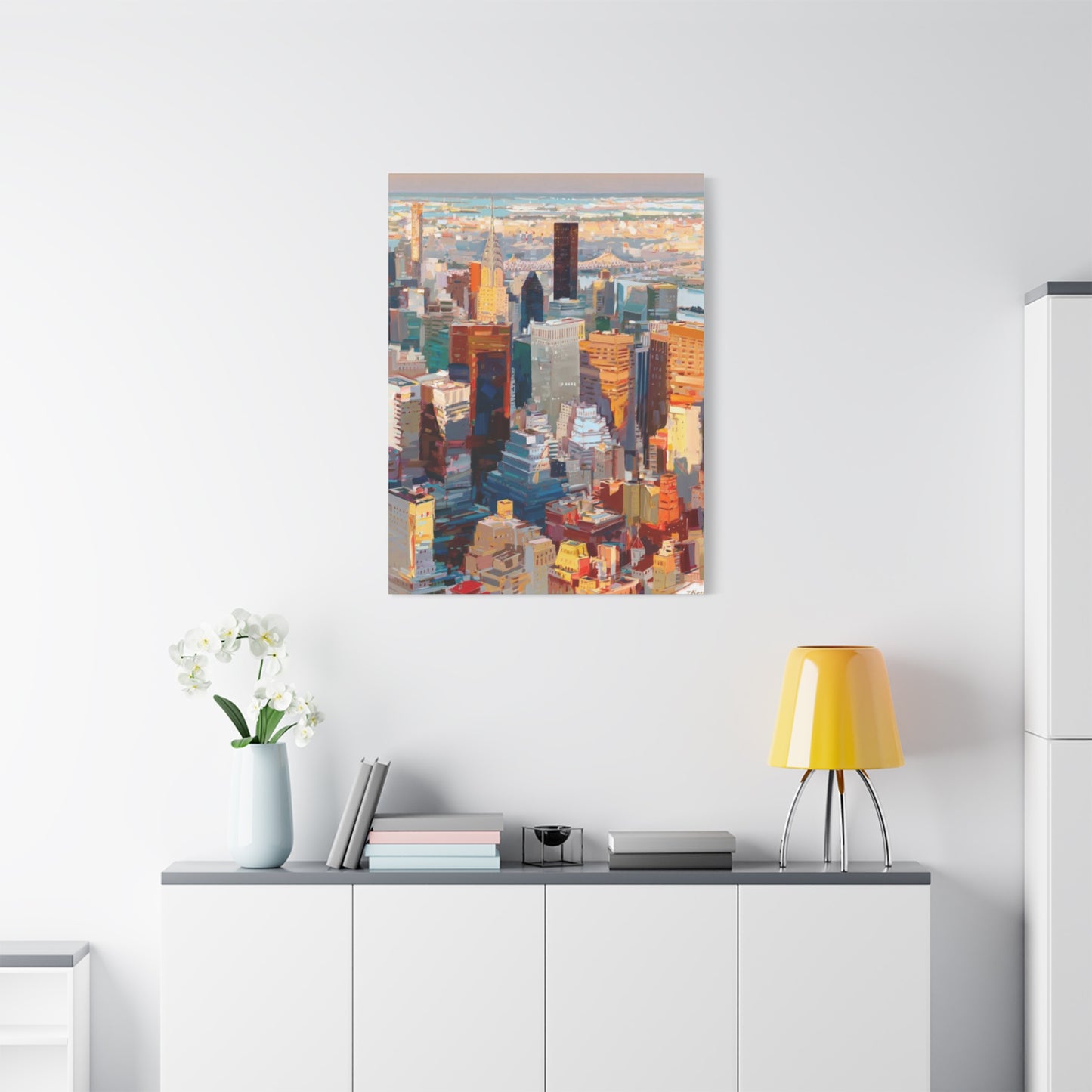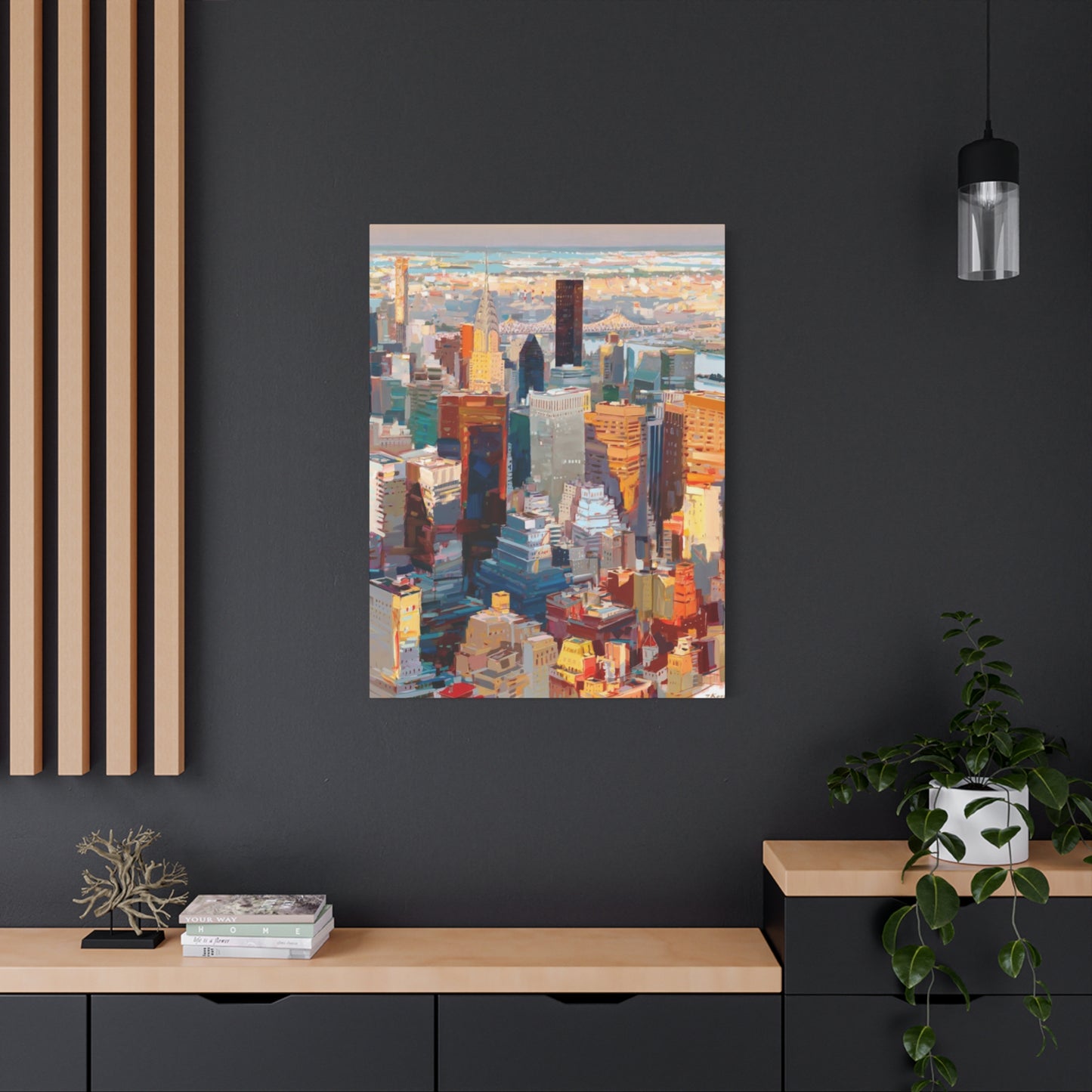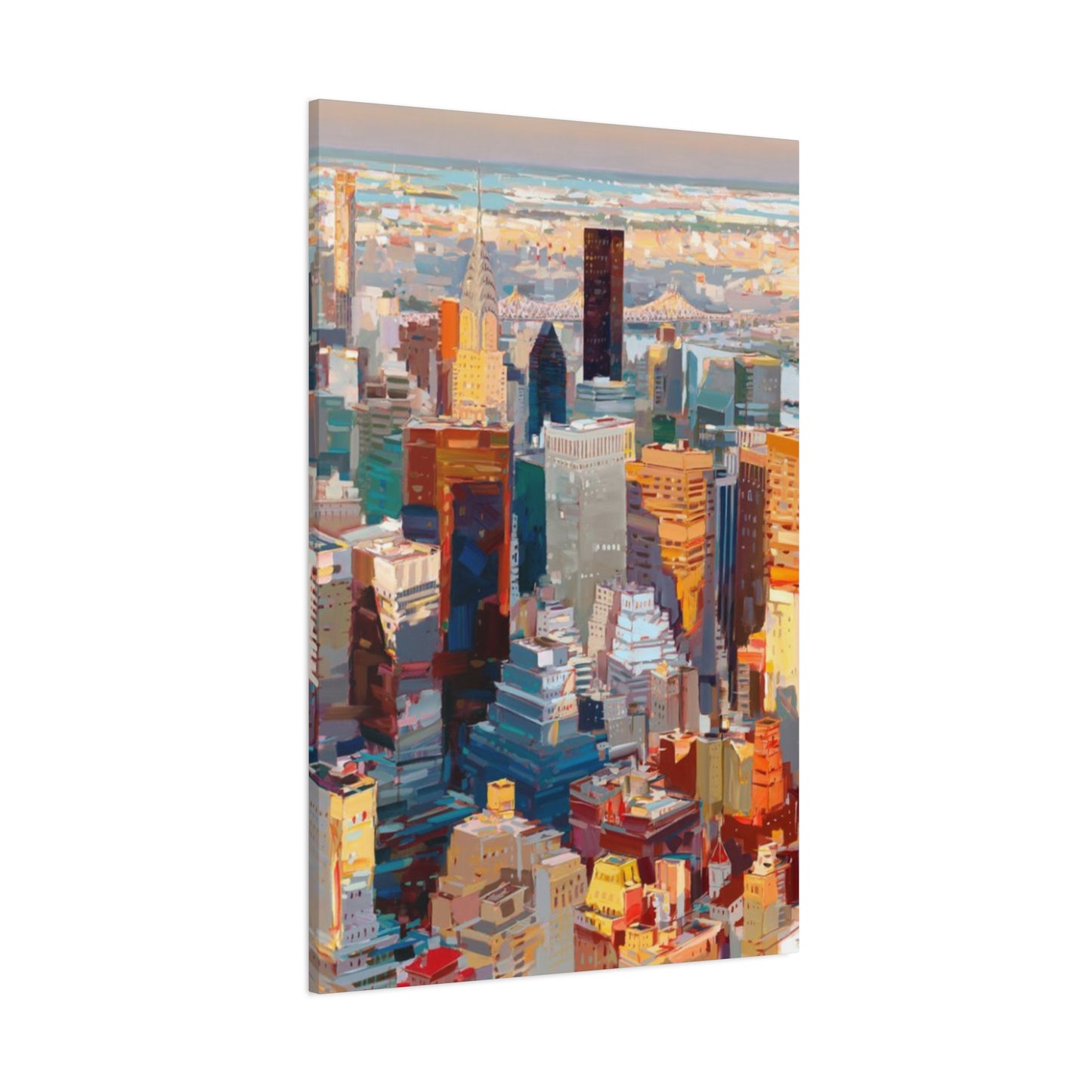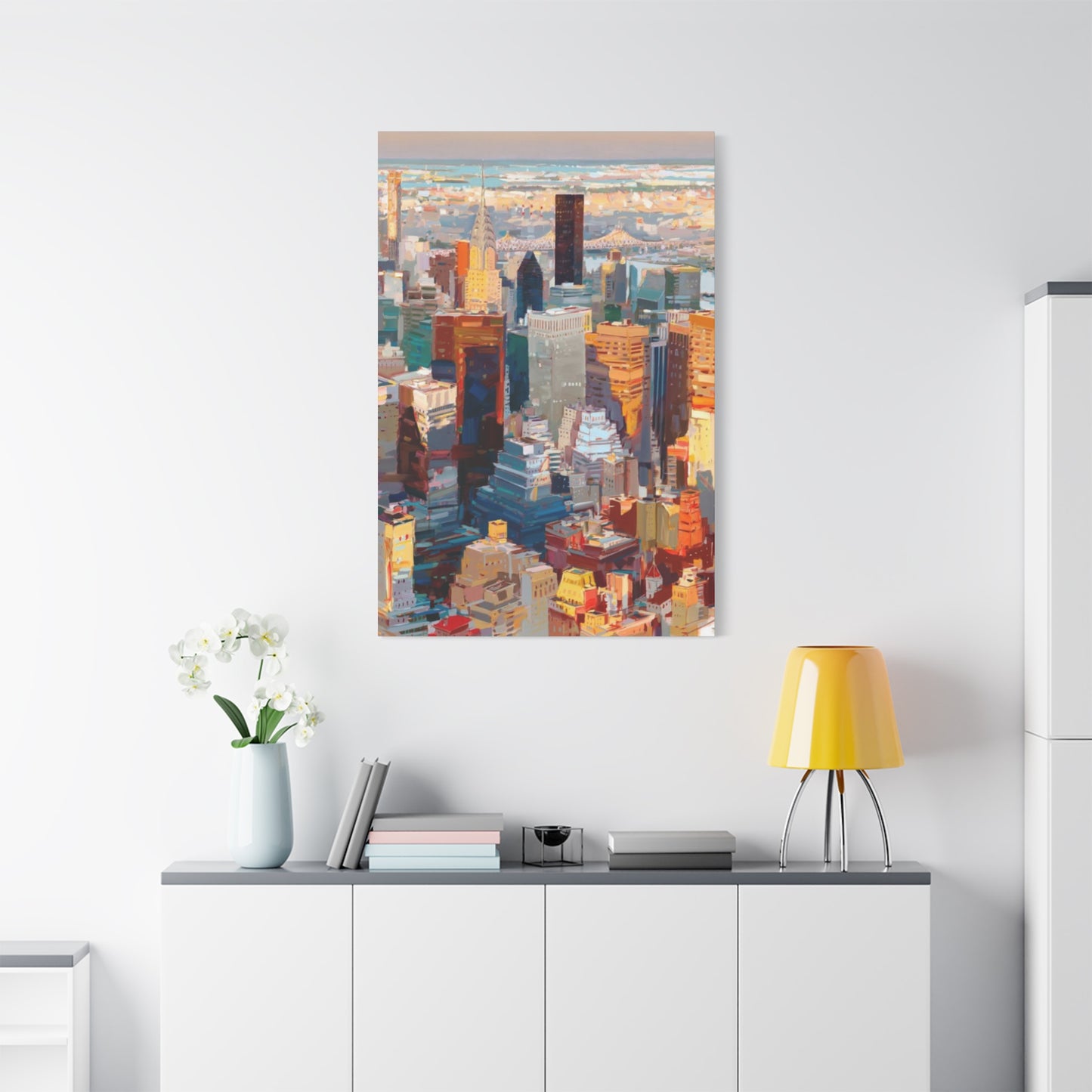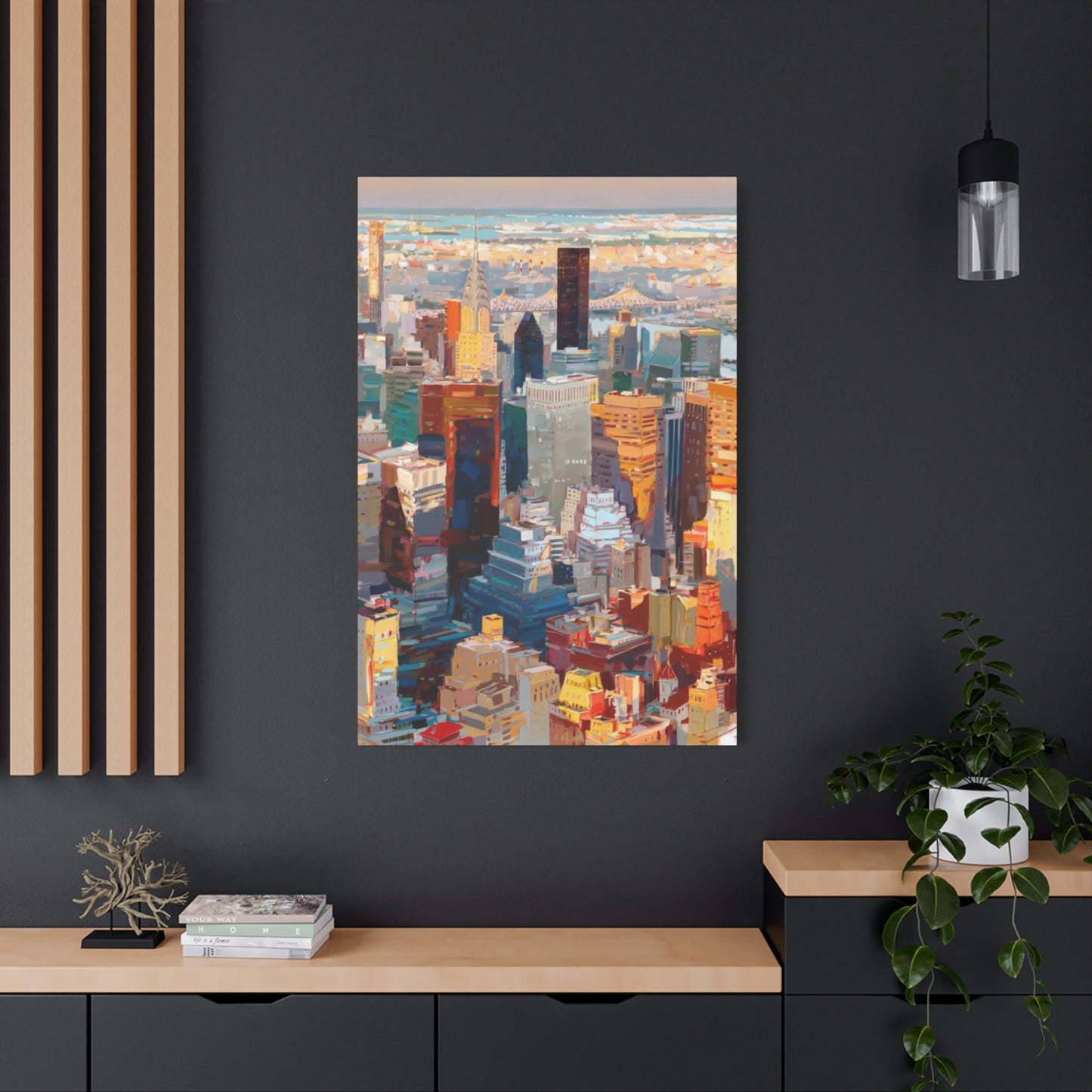NYC Wall Art: Creative Cityscape Ideas to Elevate Your Living Environment
New York City stands as one of the world's most photographed and artistically interpreted metropolitan areas, offering endless inspiration for homeowners seeking to bring urban sophistication into their living environments. The magnificent skyline, architectural marvels, and vibrant street scenes of the Big Apple provide rich source material for stunning visual displays that can transform any room into a gallery celebrating metropolitan culture.
The appeal of New York-themed artwork extends far beyond simple decoration. These pieces serve as windows into one of humanity's greatest urban achievements, capturing the energy, ambition, and dreams that define this remarkable city. From the towering skyscrapers of Manhattan to the elegant spans of its iconic bridges, every element tells a story of human ingenuity and artistic vision.
When selecting cityscape artwork for your home, you're not merely choosing decoration you're curating pieces that reflect your appreciation for architectural beauty, urban culture, and artistic excellence. The versatility of New York-themed art allows it to complement virtually any aesthetic, whether your home embraces contemporary minimalism, classic elegance, industrial chic, or eclectic bohemian style.
The psychological impact of urban imagery in residential settings has been extensively studied, revealing that cityscape art can evoke feelings of energy, aspiration, and connection to broader cultural movements. These pieces serve as daily reminders of human achievement and the beauty that can emerge from urban environments, inspiring residents and guests alike.
Modern printing technologies and artistic techniques have revolutionized the availability and quality of cityscape artwork, making museum-quality pieces accessible to homeowners at various price points. Digital reproductions now capture incredible detail, while original paintings and mixed-media works offer unique perspectives on familiar scenes.
Iconic NYC Skyline Wall Art Ideas
The Manhattan skyline represents one of the most recognizable silhouettes in the world, making it an ideal subject for dramatic visual displays. These panoramic views capture the essence of urban grandeur, featuring the interplay of architectural styles from different eras that create the city's distinctive profile. The skyline's constantly evolving nature means that artwork can represent different time periods, from classic mid-century compositions to contemporary perspectives incorporating recent architectural additions.
When considering skyline artwork, scale becomes a crucial factor in achieving maximum visual impact. Large-format pieces spanning entire walls can create breathtaking focal points that transport viewers into the urban landscape. Alternatively, series of smaller coordinated pieces can tell a story across multiple panels, showing the skyline from various angles or during different times of day.
The color palette of skyline artwork significantly influences the mood and atmosphere it creates within a room. Warm golden tones evoke the magic hour lighting that photographers prize, while cooler blue and purple hues suggest the sophisticated atmosphere of evening hours. Monochromatic treatments can emphasize architectural forms and create sophisticated, gallery-like presentations.
Textural elements in skyline art add depth and visual interest beyond simple photographic representation. Artists employ various techniques including layered paint applications, mixed media incorporating actual architectural elements, and innovative printing methods that create dimensional effects. These approaches transform flat surfaces into engaging tactile experiences that invite closer inspection.
The positioning of skyline artwork within a room requires careful consideration of viewing angles and lighting conditions. Pieces placed opposite windows can create interesting dialogues between natural and urban landscapes, while strategic artificial lighting can enhance the dramatic impact of cityscape silhouettes during evening hours.
Contemporary artists continue to reinterpret the classic skyline theme through innovative approaches including digital manipulation, abstract interpretation, and incorporation of cultural elements beyond pure architectural representation. These modern takes maintain the iconic recognition factor while offering fresh perspectives on familiar scenes.
Capturing Times Square in Cityscape Paintings
Times Square represents the pulsing heart of New York City, where neon lights, towering digital displays, and constant human activity create a sensory overload that artists have long sought to capture. The challenge of representing this dynamic environment in static artwork has led to innovative artistic approaches that attempt to convey the energy and movement inherent in this iconic location.
The color intensity of Times Square provides artists with an extraordinary palette of vibrant hues rarely found in other urban settings. Brilliant reds, electric blues, blazing yellows, and stark whites create dramatic contrasts that can energize any room. Artists working in various media have developed techniques to capture these luminous qualities, from traditional oil paintings with careful color layering to digital art that manipulates photographic sources.
Movement and motion present unique challenges when depicting Times Square in static artwork. Successful pieces often incorporate techniques that suggest the constant flow of pedestrians, vehicles, and changing advertisements. Impressionistic brushstrokes, blurred elements, and strategic use of directional lines help convey the perpetual motion that defines this urban crossroads.
The architectural backdrop of Times Square, featuring massive LED screens and towering billboards, creates opportunities for artists to explore themes of commercialism, media culture, and urban life. Some artists choose to emphasize these elements, creating pieces that comment on contemporary society, while others use them as colorful background elements that enhance the overall composition.
Scale considerations become particularly important when translating the overwhelming nature of Times Square into residential artwork. Large pieces can recreate some of the immersive experience of standing in the actual square, while smaller works might focus on specific details or vignettes that capture the essence without overwhelming the domestic setting.
The human element in Times Square artwork adds warmth and relatability to what might otherwise be purely commercial imagery. Artists often include crowds of people, individual figures, or suggested human presence through shadows and reflections, creating pieces that celebrate both the urban environment and the people who inhabit it.
Historical context adds another layer of interest to Times Square artwork, as the area has undergone significant transformations over decades. Pieces that reference different eras of the square's development can serve as historical documents while maintaining their decorative and artistic value.
Black and White New York Cityscapes for Modern Walls
Monochromatic New York cityscape artwork offers timeless elegance that transcends decorative trends while maintaining powerful visual impact. The absence of color forces viewers to focus on fundamental elements including composition, texture, contrast, and architectural form, often revealing details and relationships that might be overlooked in full-color presentations.
The dramatic contrast inherent in black and white photography and artwork particularly suits New York's architectural diversity, where glass and steel towers rise alongside historic brownstones and ornate prewar buildings. This tonal approach emphasizes the interplay of light and shadow that defines urban landscapes, creating pieces with sculptural qualities that complement minimalist and contemporary aesthetic approaches.
Texture becomes increasingly important in monochromatic work, as artists must rely on tonal variations rather than color changes to create visual interest and depth. Techniques including cross-hatching in drawings, varied brush techniques in paintings, and careful manipulation of photographic grain help create rich, engaging surfaces that reward close examination.
The graphic quality of black and white cityscape art makes it particularly suitable for modern residential and commercial environments where clean lines and sophisticated simplicity are valued. These pieces can serve as sophisticated focal points without competing with other decorative elements, furniture, or architectural features for attention.
Different artistic approaches to monochromatic cityscape work offer varying degrees of abstraction and interpretation. High-contrast photography emphasizes dramatic lighting and architectural forms, while softer, more subtle approaches might focus on atmospheric qualities and emotional resonance. Sketch-like treatments can suggest urban energy through loose, expressive line work.
The historical associations of black and white imagery connect contemporary artwork to photography and film traditions that helped establish New York's cultural identity. Classic documentary photography, film noir aesthetics, and street photography traditions all contribute to the rich visual language that monochromatic cityscape art draws upon.
Framing and presentation options for black and white cityscape art are particularly diverse, as the neutral color palette coordinates well with various frame styles and matting choices. Contemporary metal frames emphasize modern aspects, while classic wood frames can add warmth and traditional appeal to the same artwork.
Abstract NYC Cityscape Art for Urban Homes
Abstract interpretations of New York cityscapes offer unique opportunities to capture the emotional and energetic essence of urban life while creating artwork that functions as sophisticated decoration rather than literal representation. These pieces translate the rhythms, movements, and feelings associated with city living into visual compositions that resonate on emotional rather than purely representational levels.
Color relationships in abstract cityscape work often draw inspiration from urban color palettes while taking creative liberties that enhance aesthetic appeal. Artists might exaggerate the warm glow of sunset on glass buildings, intensify the cool blues of shadow areas, or create entirely new color combinations that evoke urban feelings without directly copying observed colors.
Geometric forms and angular compositions naturally emerge from urban environments, providing rich source material for abstract artistic interpretation. The rectangular shapes of buildings, diagonal lines of streets and bridges, and organic curves of parks and waterways create dynamic compositional elements that artists can manipulate, simplify, or exaggerate for maximum visual impact.
Layering techniques in abstract cityscape art can suggest the complex, multi-dimensional nature of urban environments where foreground and background elements constantly interact. Artists working in various media employ techniques including transparent glazes, overlapping forms, and mixed media applications to create depth and visual complexity that mirrors the urban experience.
The scale of abstract cityscape pieces can range from intimate works that suggest urban details to large installations that envelop viewers in color and form. The non-representational nature of abstract work often allows for more flexible sizing, as pieces don't need to maintain realistic proportions or specific architectural relationships.
Emotional resonance becomes a primary consideration in abstract cityscape art, as artists seek to convey feelings associated with urban living rather than documenting specific locations. These pieces might capture the energy of rush hour, the contemplative mood of early morning streets, or the excitement of nightlife through color, form, and composition rather than literal representation.
Contemporary abstract cityscape artists often incorporate mixed media elements including found objects, textural materials, and innovative application techniques that add physical dimension to their work. These approaches can include everything from incorporating actual urban materials to using unconventional tools and techniques that create unique surface qualities.
Brooklyn Bridge in New York Wall Art
The Brooklyn Bridge stands as one of New York's most beloved and frequently depicted architectural landmarks, combining engineering marvel with aesthetic beauty in ways that continue to inspire artists more than a century after its completion. Its graceful Gothic towers, intricate cable patterns, and symbolic significance as a connection between boroughs make it an ideal subject for artwork that celebrates both architectural achievement and urban romance.
The bridge's distinctive silhouette offers artists opportunities to explore various compositional approaches, from dramatic low-angle views that emphasize the tower's monumental scale to elevated perspectives that show the structure's relationship to surrounding cityscape elements. Each viewpoint reveals different aspects of the bridge's character and creates unique opportunities for artistic interpretation.
Lighting conditions dramatically affect the appearance and mood of Brooklyn Bridge artwork, with each time of day offering different aesthetic possibilities. Dawn light creates soft, romantic atmospheres with warm golden tones, while harsh midday sun emphasizes architectural details and creates strong contrast patterns. Evening and night scenes allow artists to explore artificial lighting effects and create dramatic silhouettes against illuminated backgrounds.
The bridge's structural elements provide rich material for artists interested in pattern, repetition, and geometric relationships. The cable systems create complex linear patterns that can be emphasized or simplified depending on artistic intent, while the stone towers offer opportunities to explore texture, mass, and historical architectural details.
Water elements add another dimension to Brooklyn Bridge artwork, as the East River's surface can reflect light, create movement through wave patterns, or serve as a simplified foreground that emphasizes the bridge structure. Artists working in various media have developed techniques for representing water that range from realistic reflection rendering to abstract suggestions of fluidity and movement.
Human scale elements in Brooklyn Bridge art help viewers relate to the monumental structure while adding narrative interest to compositions. Pedestrians crossing the bridge, boats passing underneath, or figures viewing from nearby locations provide scale references and emotional connections that enhance the artwork's appeal.
Historical context enriches Brooklyn Bridge artwork, as the structure represents not only architectural achievement but also the growth and development of New York as a major metropolitan area. Artists can choose to emphasize these historical associations or focus purely on the bridge's contemporary aesthetic appeal.
Sunset Over Manhattan: NYC Wall Decor
Manhattan sunset imagery captures one of nature's most spectacular daily performances as it unfolds against one of humanity's most impressive architectural backdrops. The interplay between natural lighting phenomena and urban geometry creates opportunities for artwork that celebrates both natural beauty and human achievement in single, cohesive compositions.
The golden hour lighting that occurs during sunset provides ideal conditions for photographing and painting Manhattan's skyline, as warm light enhances building surfaces while cool shadows create dramatic contrast patterns. This natural lighting effect has been prized by artists throughout history, and its application to urban subjects creates particularly striking results that work well in residential settings.
Color transitions during sunset provide artists with rich palettes that range from brilliant oranges and reds near the horizon to deep purples and blues in upper sky areas. These natural color progressions create harmonious compositions that can complement various decorative schemes while maintaining visual interest through subtle tonal variations.
Reflection effects on building surfaces during sunset hours add complexity and visual interest to Manhattan imagery. Glass buildings become giant mirrors that capture and redirect colored light, creating secondary light sources and color accents throughout the composition. Water surfaces in the foreground can double these effects, creating rich, layered visual experiences.
The silhouette effect created by sunset backlighting emphasizes Manhattan's distinctive skyline profile while simplifying architectural details into bold, graphic forms. This approach can create powerful, minimalist compositions that work well in contemporary settings while maintaining the romantic appeal of sunset lighting.
Atmospheric effects during sunset, including haze, clouds, and humidity, can soften harsh urban edges and create more organic, painterly qualities in cityscape artwork. These natural elements help bridge the gap between urban and natural environments, creating pieces that appeal to viewers who might otherwise find pure architectural subjects too severe.
Seasonal variations in sunset timing and atmospheric conditions provide artists with numerous opportunities to explore different moods and aesthetic approaches within the same basic subject matter. Winter sunsets might emphasize cool colors and stark contrasts, while summer versions could feature warmer tones and softer atmospheric effects.
Minimalist NYC Skyline Line Art
Minimalist line art interpretations of the New York skyline distill the city's complex architectural diversity into essential geometric forms and relationships, creating sophisticated artwork that celebrates urban beauty through simplification rather than elaborate detail. This approach emphasizes the fundamental shapes and proportions that make the Manhattan skyline instantly recognizable while creating pieces suitable for contemporary aesthetic sensibilities.
The reduction of complex architectural forms into simple linear elements requires careful consideration of which details to retain and which to eliminate. Successful minimalist skyline art maintains enough characteristic features to preserve recognition while achieving the clean, uncluttered appearance that defines this aesthetic approach. Key landmarks and distinctive building shapes serve as anchor points that maintain visual connection to the actual cityscape.
Line weight variations in minimalist skyline art can suggest depth, importance, and visual hierarchy without resorting to complex shading or color work. Thicker lines might represent major architectural elements or foreground buildings, while thinner lines could indicate background structures or secondary details. These subtle variations create sophisticated compositions that reward careful observation.
The spacing and proportion relationships between buildings in minimalist line art become crucial elements that can make or break a composition's success. Artists must carefully consider how simplified building forms relate to each other and to the overall composition, ensuring that the essential character of the skyline remains intact despite significant visual simplification.
Contemporary minimalist line art often employs precise, geometric approaches that emphasize the architectural nature of urban subjects. Clean, straight lines and carefully controlled curves create compositions that feel architectural in themselves, creating interesting dialogues between the represented buildings and the artistic structure used to depict them.
The versatility of minimalist line art makes it suitable for various presentation formats, from small, delicate pieces that function as subtle decorative accents to large-scale installations that create dramatic focal points. The simple, graphic nature of this artwork also makes it suitable for various reproduction methods and framing approaches.
Digital creation tools have revolutionized minimalist line art production, allowing artists to achieve precise, clean lines and experiment with proportions and arrangements more easily than traditional methods might allow. These tools also facilitate the creation of series and variations that explore different aspects of the same subject matter.
Nighttime Cityscapes of New York City
New York City transforms dramatically after dark, as artificial illumination creates an entirely different urban landscape characterized by glowing windows, neon signs, street lighting, and the interplay between light and shadow that defines nocturnal metropolitan environments. Nighttime cityscape artwork captures this magical transformation while celebrating the 24-hour vitality that makes New York unique among world cities.
The contrast between illuminated and dark areas in nighttime cityscapes creates natural dramatic effects that artists have long exploited for maximum visual impact. Bright building windows against dark facades, glowing street lights cutting through shadows, and neon signs creating pools of colored light all contribute to compositions rich in contrast and visual interest.
Color temperatures in nighttime urban scenes vary dramatically depending on light sources, creating opportunities for artists to explore complex color relationships and atmospheric effects. Warm incandescent light from building interiors contrasts with cool fluorescent street lighting, while neon signs add spots of intense, saturated color that can serve as focal points or accent elements.
The vertical emphasis of Manhattan's architecture becomes particularly pronounced in nighttime imagery, as illuminated building windows create tower-like columns of light that stretch toward dark sky areas. This natural emphasis on vertical movement can create dynamic compositions that draw viewers' eyes upward and emphasize the monumental scale of urban architecture.
Reflection effects multiply the visual complexity of nighttime cityscapes, as wet streets, building windows, and water surfaces all capture and redirect artificial light sources. These reflection patterns create secondary compositions within the primary image, adding layers of visual interest that can be emphasized or minimized depending on artistic intent.
The human element in nighttime cityscape art often appears as silhouettes, window figures, or suggestions of activity rather than detailed representation. This approach maintains the mysterious, romantic quality of night scenes while acknowledging the human presence that gives cities their vitality and meaning.
Atmospheric effects including fog, rain, and humidity can dramatically enhance nighttime cityscape artwork by softening harsh edges, creating halos around light sources, and adding organic elements that contrast with rigid architectural forms. These natural elements help create mood and emotional resonance that purely architectural subjects might lack.
NYC Aerial Views as Stunning Wall Art
Aerial perspectives of New York City reveal urban patterns, relationships, and geometric arrangements that remain invisible from ground level, creating opportunities for artwork that celebrates the city as a designed environment while showcasing the beauty inherent in large-scale urban planning and organic growth patterns.
The bird's-eye viewpoint transforms familiar street-level experiences into abstract patterns of rectangles, lines, and geometric relationships that emphasize the underlying order within apparent urban chaos. Streets become flowing lines, building blocks create grid patterns, and parks appear as organic shapes that provide visual relief from rigid geometric structures.
Central Park viewed from aerial perspectives becomes a dramatic focal point in Manhattan imagery, its rectangular green form creating powerful contrast against surrounding urban density. The park's internal pathways, water features, and seasonal color changes provide opportunities for artists to explore organic forms within geometric contexts, creating compositions that celebrate both natural and designed environments.
River and water elements in aerial cityscape art serve multiple compositional functions, creating natural borders, providing reflective surfaces, and introducing curved, organic lines that contrast with rectangular building patterns. The Hudson and East Rivers frame Manhattan in ways that emphasize the island's distinctive shape while providing foreground and background elements that enhance overall composition.
Bridge structures viewed from aerial perspectives reveal their engineering elegance while showing their function as connections between different urban areas. These linear elements create diagonal movements across compositions while serving as scale references that help viewers comprehend the immense scope of the urban landscape.
Traffic patterns and street activity, when visible in aerial artwork, add life and movement to what might otherwise be purely architectural subjects. Suggested vehicle movement, pedestrian activity, and the general buzz of urban life help maintain connection to the human experience of city living.
The challenge of creating aerial cityscape art lies in balancing accurate representation with aesthetic appeal, as pure documentary approaches might lack the visual organization and emotional resonance needed for successful decorative artwork. Artists must often emphasize certain elements while downplaying others to create compositions that work effectively as wall art.
Pop Art Style New York Cityscapes
Pop Art interpretations of New York cityscapes celebrate the commercial, energetic, and culturally vibrant aspects of urban life through bold colors, graphic simplification, and references to popular culture and media imagery. This artistic approach transforms cityscape subjects into statements about contemporary life while creating visually striking artwork suitable for modern residential and commercial environments.
The bold color palettes characteristic of Pop Art create immediate visual impact while departing from naturalistic representation in favor of expressive, symbolic color use. Bright pinks, electric blues, acid yellows, and other non-naturalistic colors can transform familiar cityscape elements into exciting, contemporary artistic statements that energize any room.
Graphic simplification techniques reduce complex architectural details to essential shapes and forms, creating compositions that function almost like large-scale graphic design elements. This approach makes Pop Art cityscapes particularly suitable for contemporary environments where clean, bold visual statements are preferred over subtle, complex imagery.
Commercial and cultural references embedded in Pop Art cityscape work can include everything from advertising imagery and brand symbols to references to movies, music, and other aspects of popular culture associated with New York City. These elements add layers of meaning while maintaining the accessible, democratic spirit that defines Pop Art movement.
Screen printing and digital reproduction techniques commonly associated with Pop Art production create distinctive visual qualities including flat color areas, precise edges, and sometimes deliberately visible printing patterns. These technical approaches become part of the artwork's aesthetic appeal while making high-quality reproductions widely available.
The repetition and variation strategies often employed in Pop Art can be applied to cityscape subjects through series of related pieces that show the same scenes in different color schemes, from various angles, or with different graphic treatments. These series approaches can create powerful wall installations that tell visual stories about urban experience.
Contemporary Pop Art cityscape work often incorporates digital manipulation techniques and mixed media approaches that were unavailable to original Pop artists, creating new possibilities for color manipulation, image combination, and surface treatment that maintain the movement's essential spirit while employing current technology.
Contemporary NYC Photography Prints
Contemporary photographers continue to find fresh perspectives on New York City subjects, employing advanced technical capabilities and innovative artistic approaches to create images that reveal new aspects of familiar urban environments. High-resolution digital capture, sophisticated post-processing capabilities, and innovative printing technologies have revolutionized the quality and artistic possibilities available in photographic cityscape art.
Technical advances in camera equipment allow contemporary photographers to capture images in extreme lighting conditions that were previously impossible to document effectively. Low-light capabilities enable detailed night photography, while high dynamic range techniques can capture scenes that include both bright highlights and deep shadows without losing detail in either area.
Post-processing capabilities in digital photography provide artists with unprecedented control over final image appearance, allowing for selective color adjustments, contrast manipulation, and artistic effects that can transform documentary photographs into highly stylized artistic statements. These tools enable photographers to compete with painters and graphic artists in creating visually striking wall art.
Large format printing capabilities make it possible to create museum-quality photographic prints in sizes that were previously practical only for paintings and other artistic media. These large prints can serve as dramatic focal points in residential and commercial environments while maintaining the fine detail and tonal quality that characterize excellent photography.
Contemporary photographers often explore themes and subjects that previous generations might have overlooked, including industrial areas, construction sites, cultural communities, and other aspects of urban life that contribute to the city's complete character. These expanded subject areas provide fresh material for cityscape art while documenting the city's continuing evolution.
Street photography traditions continue to evolve in contemporary NYC photography, with artists finding new ways to capture human stories within urban environments. These approaches often combine architectural documentation with social observation, creating pieces that celebrate both built environments and the people who inhabit them.
Environmental and social consciousness influences much contemporary photography, with artists documenting urban sustainability efforts, gentrification processes, cultural preservation, and other issues that reflect current concerns about urban development and community life.
Mixed Media NYC Art Installations
Mixed media approaches to New York cityscape art combine various materials, techniques, and artistic traditions to create unique pieces that can incorporate everything from traditional painting and drawing to found objects, textural materials, and innovative application methods. These approaches allow artists to create highly individual works that capture different aspects of urban experience through diverse material choices.
Textural elements in mixed media cityscape work might include actual urban materials such as concrete fragments, metal pieces, glass elements, or other materials collected from city environments. These authentic materials can add literal connections to urban experience while creating tactile surfaces that engage viewers through multiple senses.
Layering techniques in mixed media work can suggest the complex, multi-dimensional nature of urban environments where historical and contemporary elements coexist, foreground and background constantly shift, and various activities and functions overlap within single locations. These artistic layers can mirror the experiential layers that characterize city living.
Collage elements might incorporate maps, newspaper clippings, advertising materials, ticket stubs, and other ephemeral urban materials that add cultural context and personal narrative to artistic compositions. These elements can transform abstract cityscape art into personal statements about individual relationships with urban environments.
Three-dimensional elements can project from wall surfaces, creating sculptural qualities that emphasize the architectural nature of urban subjects while adding shadow patterns and viewing angle variations that change as viewers move past the artwork. These dimensional aspects can make static wall art feel more dynamic and engaging.
Contemporary mixed media artists often incorporate technology elements including LED lights, digital displays, or interactive components that can respond to viewer presence or environmental conditions. These technological additions can create artwork that changes over time, mirroring the constantly evolving nature of urban environments.
Found object incorporation allows artists to create direct connections between artwork and urban experience by including actual items collected from city streets, construction sites, or other urban locations. These authentic elements can serve as focal points or subtle details that add layers of meaning for observant viewers.
Gallery Wall Arrangements with NYC Art
Creating cohesive gallery wall arrangements featuring New York cityscape art requires careful consideration of scale relationships, color coordination, thematic connections, and compositional balance to achieve professional-looking installations that enhance rather than overwhelm residential environments. Successful gallery walls tell visual stories while complementing room architecture and decorative schemes.
Scale variation within gallery wall arrangements creates visual interest and hierarchy while accommodating different types of artwork and viewing distances. Large pieces can serve as anchor points around which smaller works are arranged, while groups of similar-sized pieces can create rhythmic patterns that unify diverse subject matter or artistic approaches.
Color coordination strategies for NYC art gallery walls might emphasize monochromatic schemes that let architectural subjects speak for themselves, or they might embrace the full spectrum of urban colors while maintaining enough visual connection to prevent chaos. Careful attention to color temperature relationships can help disparate pieces work together harmoniously.
Thematic connections between different pieces in gallery wall arrangements can include shared subjects, similar artistic approaches, complementary time periods, or related viewpoints of the same general area. These connections help viewers understand relationships between pieces while creating educational opportunities that enhance appreciation for urban subjects.
Frame coordination plays crucial roles in gallery wall success, as consistent framing approaches can unify diverse artwork while varied frame styles might create visual confusion. Contemporary gallery walls often employ consistent frame styles with strategic variations in size rather than mixing multiple frame types within single arrangements.
Lighting considerations become particularly important in gallery wall installations, as multiple pieces require even illumination that prevents some works from appearing dim while others are over-lit. Track lighting systems or multiple picture lights can provide flexible solutions that accommodate different piece sizes and arrangements.
Professional installation techniques ensure that gallery walls remain stable and properly aligned over time while accommodating the weight and mounting requirements of different artwork types. Proper planning and installation prevent damage to both artwork and wall surfaces while creating arrangements that look professionally curated.
Seasonal NYC Art Collections
New York City experiences dramatic seasonal transformations that provide rich material for artwork series that celebrate the changing character of urban environments throughout the year. Seasonal NYC art collections can document everything from Central Park's autumn colors to winter snow effects on architectural surfaces, creating cohesive bodies of work that tell year-long stories about city life.
Spring imagery in NYC art often focuses on the renewal and growth that transforms parks and street trees, creating opportunities for artists to explore fresh green colors against architectural backgrounds. Cherry blossoms, tulips, and other spring flowers provide colorful focal points while suggesting themes of renewal and optimism that resonate with many viewers.
Summer representations might emphasize the intense activity and vibrant street life that characterizes warm weather months, when outdoor dining, street festivals, and park activities bring urban environments to life in ways that contrast dramatically with colder seasons. Long daylight hours also provide extended opportunities for golden hour lighting effects.
Autumn artwork celebrating New York's fall season often centers on Central Park and other green areas where changing leaf colors create spectacular natural displays against urban backdrops. The warm colors of fall foliage provide natural color palettes that work well in residential settings while celebrating one of the city's most beautiful seasonal transitions.
Winter scenes offer opportunities to explore how snow and ice transform familiar urban landscapes, softening harsh architectural edges while creating monochromatic compositions that emphasize form and texture over color. Winter lighting conditions also create unique atmospheric effects that can produce particularly dramatic artistic results.
Holiday season artwork might incorporate decorative lighting, seasonal displays, and cultural celebrations that transform the city during various times of year. These festive elements can create cheerful, celebratory artwork suitable for both permanent display and seasonal rotation depending on homeowner preferences.
Seasonal progression series allow artists and collectors to document the complete annual cycle of urban transformation, creating educational and aesthetic resources that celebrate the dynamic nature of city environments while providing variety for residential display throughout the year.
Large Scale NYC Murals for Statement Walls
Large scale mural installations featuring New York City themes can transform entire rooms into immersive urban environments while creating dramatic focal points that establish strong aesthetic statements. These installations require careful planning and professional execution but can create unparalleled visual impact that makes residential or commercial environments truly memorable.
Planning considerations for large NYC murals include wall preparation, design scaling, color coordination with existing room elements, and long-term maintenance requirements. Professional mural artists can provide expertise in these technical areas while helping clients develop designs that work effectively at architectural scales.
Design approaches for large NYC murals might include panoramic skyline views that span entire walls, detailed street scene recreations that invite exploration and discovery, or abstract interpretations that capture urban energy through color and form rather than literal representation. Each approach offers different advantages depending on room function and aesthetic goals.
Installation techniques for large murals vary depending on whether artwork is painted directly on wall surfaces or applied as large format printed panels. Direct painting allows for complete customization and seamless integration with architectural features, while printed panels can offer more precise color control and faster installation times.
Lighting integration becomes crucial for large mural installations, as proper illumination can enhance dramatic effects while poor lighting can diminish even excellent artwork. Professional lighting design might include accent lighting that emphasizes key areas, general illumination that reveals overall compositions, or even colored lighting that can change mural appearance for different occasions.
Maintenance and preservation requirements for large NYC murals depend on materials, location, and environmental conditions but generally require periodic cleaning and possible touch-up work to maintain original appearance. Proper initial installation and material selection can minimize maintenance needs while preserving investment value.
Removal and replacement considerations should be addressed during initial planning, as changing aesthetic preferences or property modifications might eventually require mural changes. Some installation methods allow for easier modification or removal than others, providing flexibility for future design changes.
Historical NYC Art and Vintage Posters
Historical New York City artwork and vintage poster collections offer opportunities to celebrate the city's rich cultural heritage while creating unique decorative schemes that emphasize historical continuity and cultural appreciation. These pieces can include everything from reproduction historical prints to authentic vintage advertising materials that document the city's commercial and cultural development.
Vintage travel posters promoting New York as a destination showcase the city's appeal to visitors throughout different historical periods while employing distinctive graphic design styles that characterize different eras. These pieces often feature iconic landmarks and attractions while demonstrating how the city's image has been marketed and perceived over time.
Historical maps and architectural drawings provide educational and decorative value while celebrating the city's planned development and organic growth patterns. These technical documents can be surprisingly beautiful when properly presented, offering viewers opportunities to explore the city's physical development and urban planning history.
Period photography collections might include street scenes, architectural documentation, cultural events, and daily life imagery that provides windows into past eras while demonstrating how the city has evolved over time. These authentic historical documents can create powerful connections to past generations and cultural traditions.
Vintage advertising materials including posters, signs, and commercial graphics celebrate the city's role as a commercial and cultural center while showcasing graphic design evolution and commercial art traditions. These pieces often feature distinctive typography and artistic approaches that reflect their creation periods.
Historical art movements represented in NYC-themed work might include everything from early American landscape painting to Social Realist documentation of urban life during the Depression era. These pieces provide cultural context while demonstrating how different artistic traditions have interpreted urban subjects.
Contemporary reproductions of historical artwork make important pieces accessible to modern collectors while avoiding the high costs and preservation concerns associated with authentic antiques. High-quality reproductions can provide the aesthetic benefits of historical artwork while fitting within contemporary budgets and installation requirements.
Modern Architectural NYC Prints
Contemporary architectural photography and artistic representation of New York's modern buildings celebrates the city's continuing evolution while showcasing innovative design approaches and engineering achievements that define 21st-century urban development. These pieces often focus on recently constructed buildings and renovated structures that represent current architectural thinking.
Glass and steel construction techniques create new opportunities for architectural photographers and artists to explore reflection effects, transparency relationships, and the interplay between interior and exterior environments. Modern buildings often provide dramatic subjects for artwork that emphasizes geometric forms and contemporary aesthetic approaches.
Sustainable architecture and green building initiatives provide contemporary subject matter that reflects current environmental consciousness while documenting the city's efforts to address climate change and resource conservation. These subjects can appeal to environmentally conscious viewers while showcasing innovative architectural solutions.
High-tech building systems and smart architecture elements create new aesthetic possibilities while representing the integration of technology with traditional building functions. These modern elements can provide futuristic themes for artwork while documenting current technological capabilities and design thinking.
Renovation and adaptive reuse projects that transform historical buildings for contemporary functions create interesting subjects that celebrate both preservation and innovation. These projects often create striking contrasts between old and new elements that can provide rich material for artistic interpretation.
Contemporary architects working in New York often develop distinctive aesthetic approaches that can be celebrated through focused artwork series or collections. Highlighting specific architects or architectural firms can provide educational opportunities while supporting contemporary design culture.
Public art integration with architectural projects creates new opportunities for artwork that documents the intersection between building design and artistic expression. These collaborations often result in unique aesthetic statements that can inspire residential art selections and interior design approaches.
NYC Art for Different Room Types
Different residential room types present unique opportunities and challenges for displaying New York City-themed artwork, with each environment requiring consideration of function, scale, lighting conditions, and aesthetic goals to achieve successful integration of urban art themes with domestic living requirements.
Living room NYC art installations often serve as primary focal points that establish aesthetic themes for entire homes while accommodating conversation and entertainment functions. Large scale pieces work well in these contexts, as do gallery wall arrangements that can spark conversation and provide visual interest during social gatherings.
Bedroom cityscape art should generally emphasize calming, romantic, or inspirational themes rather than high-energy urban imagery that might interfere with rest and relaxation. Softer interpretations of city subjects, including sunset scenes, romantic bridge views, or peaceful park imagery, can provide urban sophistication without overstimulation.
Kitchen and dining area NYC art might celebrate the city's renowned food culture, restaurant scenes, or market imagery while complementing social functions associated with these room types. Vintage advertising, food-related urban scenes, or colorful market imagery can enhance dining experiences while maintaining thematic consistency.
Home office environments can benefit from inspirational urban imagery that suggests energy, achievement, and professional ambition while providing visual interest during work hours. Skyline views, architectural studies, or abstract urban interpretations can create stimulating work environments without becoming distracting.
Bathroom NYC art should generally be smaller in scale while considering humidity and privacy requirements that characterize these intimate environments. Water-resistant materials and frames become important considerations, while subject matter might include bridge views, river scenes, or other water-related urban imagery.
Hallway and stairway installations can accommodate series of related pieces that tell visual stories as viewers move through transitional areas. These locations often provide opportunities for more experimental arrangements and can handle higher energy imagery since they're experienced briefly rather than extensively.
Guest bedroom art selections should aim to create welcoming, impressive environments that showcase homeowner sophistication while avoiding overly personal or challenging imagery that might make guests uncomfortable. Classic, universally appealing NYC subjects work well in these contexts.
Conclusion
NYC wall art is a dynamic and inspiring way to capture the essence of one of the world’s most iconic cities and bring that energy into your living environment. Whether it’s the towering skyline, bustling streets, or famous landmarks like the Statue of Liberty and Brooklyn Bridge, New York City’s vibrancy and diversity make for captivating artistic inspiration. Incorporating NYC cityscape art into your home not only adds visual interest but also infuses your space with the city’s unmistakable spirit of ambition, creativity, and resilience.
Creative NYC wall art comes in countless styles—from sleek minimalist line drawings and bold graphic prints to detailed watercolor scenes and abstract interpretations. This versatility allows you to find pieces that perfectly suit your personal taste and complement your interior design, whether your space is modern, industrial, eclectic, or classic.
Beyond aesthetics, NYC wall art serves as a constant reminder of the city’s unique culture and fast-paced lifestyle, inspiring energy and motivation daily. It can also spark memories for those who have lived in or visited the city, creating a personal connection that makes your home feel truly yours.
Ultimately, NYC wall art elevates your living environment by transforming your walls into a celebration of urban beauty and endless possibility. It’s a stylish, meaningful way to bring the magic of the Big Apple into your everyday life, inspiring you with the city’s iconic charm and creative pulse.

















